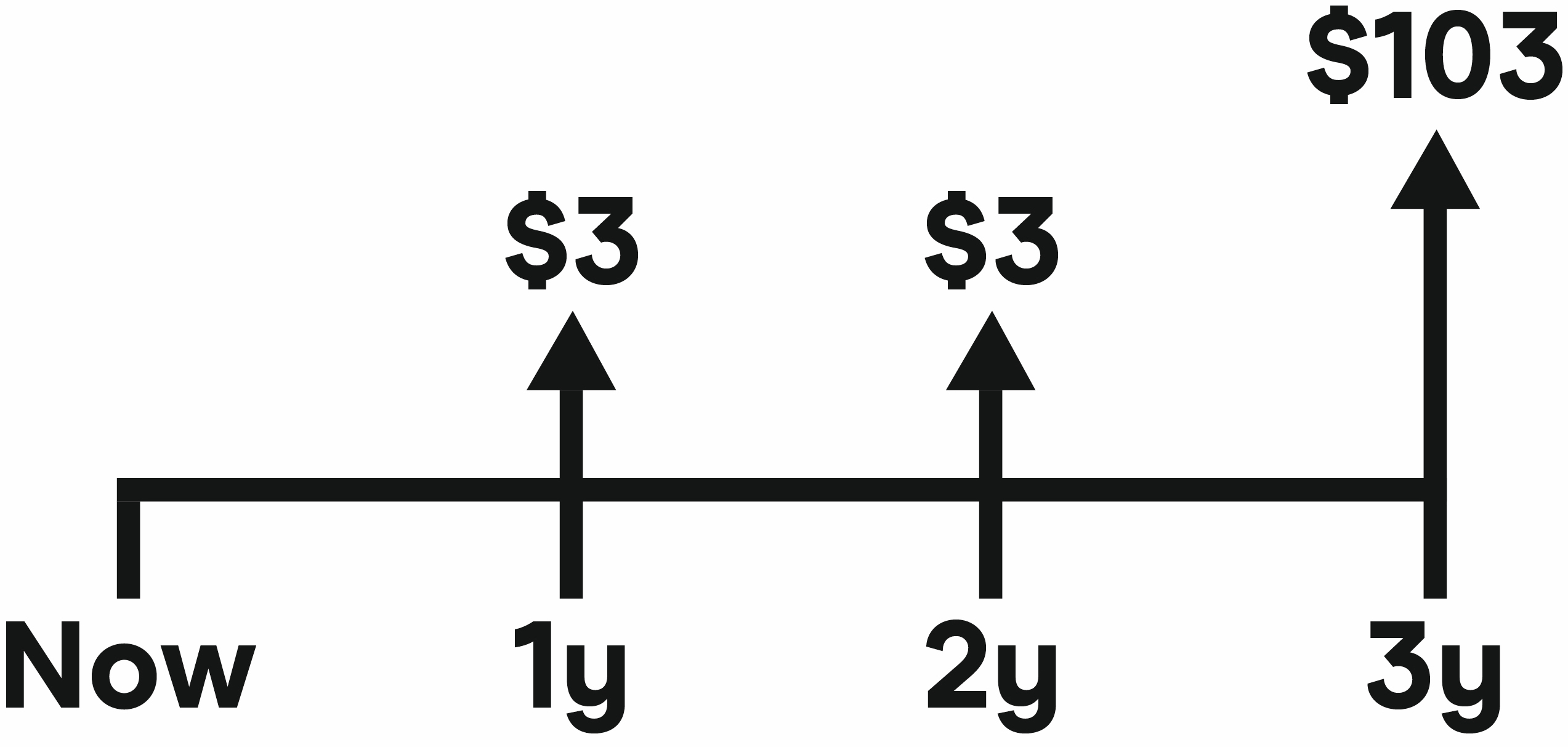Coupon paying bonds
Bond Valuation and Analysis in Python

Joshua Mayhew
Options Trader
Coupon bond definition
- Pays regular cash-flows (coupons) during its life
- At maturity it pays both a coupon and the face value
- Coupons are typically paid annually or semi-annually
- The number of coupons paid per year is called the frequency
- Its yield to maturity is the annual return from buying and holding the bond to maturity
Coupon bond example
Take a 3 year bond with a 3% annual coupon, face value of USD 100, and yield of 4%:

WARNING: The coupon is fixed and doesn't change!
Coupon bond pricing
We break the bond up into a collection of zero coupon bonds, then price these:
- A 1 year zero coupon bond with a face value of USD 3
- A 2 year zero coupon bond with a face value of USD 3
- A 3 year zero coupon bond with a face value of USD 103
Coupon bond pricing
3 year bond with a 3% annual coupon, face value of USD 100, and yield of 4%
Using our compound interest formula from earlier:
$ \text{1yr ZCB Price: } \frac{3}{(1 + 0.04)^1} = 2.88$
$ \text{2yr ZCB Price: } \ \frac{3}{(1 + 0.04)^2} = 2.77$
$ \text{3yr ZCB Price: } \ \frac{103}{(1 + 0.04)^3} = 91.57$
$\text{Coupon Bond Price: } 2.88 + 2.77 + 91.57 = 97.22$
Coupon bond formula
More generally, our formula for the price of a coupon bond is:
$ Price = PV = \frac{C}{(1 + r)^1} + \frac{C}{(1 + r)^2} + ... +\frac{C}{(1 + r)^n} + \frac{P}{(1 + r)^n}$
$ = (\sum_{i=1}^n \frac{C}{(1 + r)^i}) + \frac{P}{(1 + r)^n}$
- $C$ is the coupon paid in each time period
- $r$ is the yield to maturity of the bond
- $P$ is the face value (or principal) paid at maturity
- $n$ is the number of time periods (typically years)
Using the pv() function
Taking the same 3 year bond with an annual coupon of 3% and yield to maturity of 4%:
import numpy_financial as npf
-npf.pv(rate=0.04, nper=3, pmt=3, fv=100)
97.22
We set pmt to be positive.
We also put a minus sign before the function.
We set fv to 100 not 103.
Let's practice!
Bond Valuation and Analysis in Python

